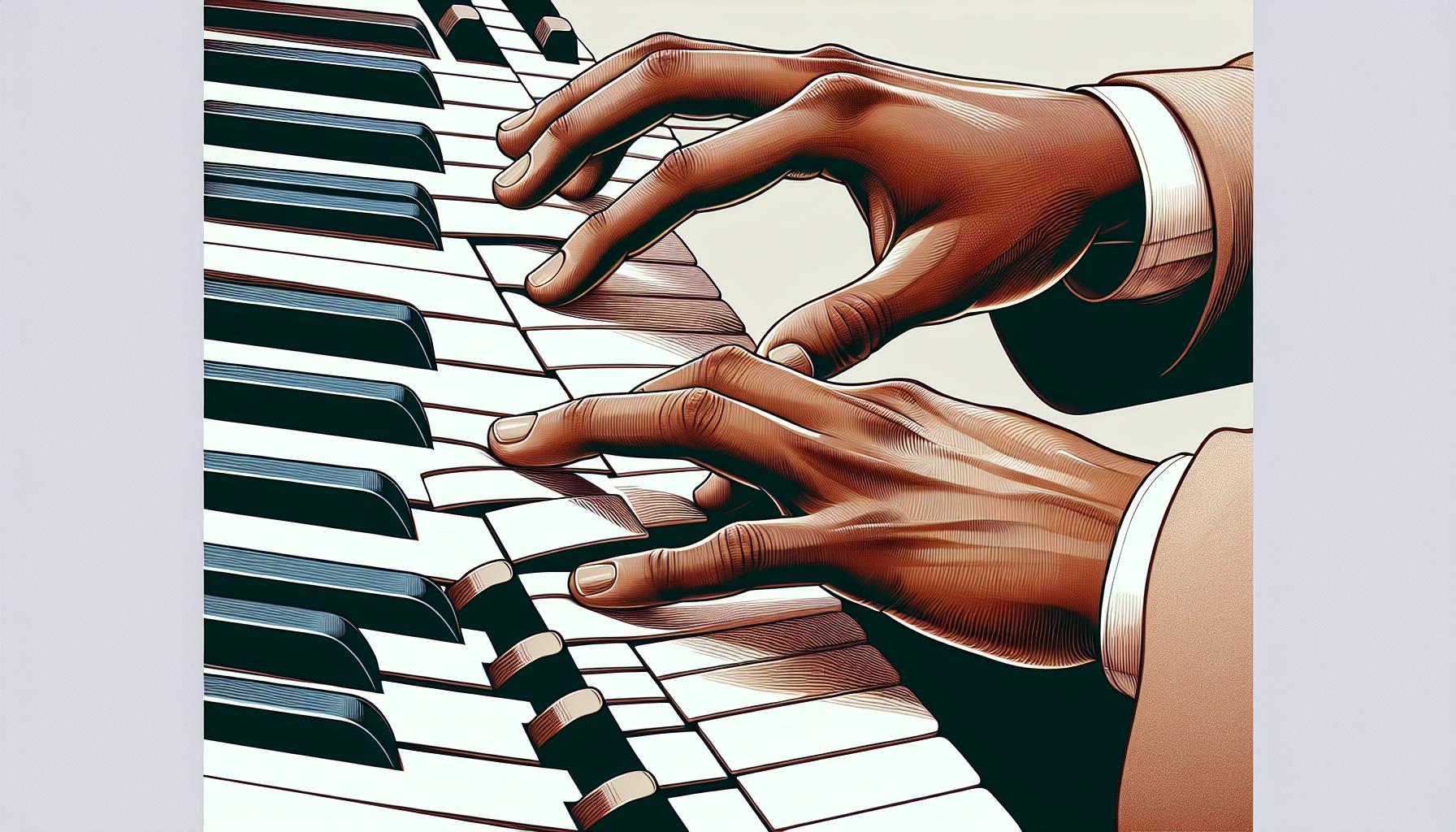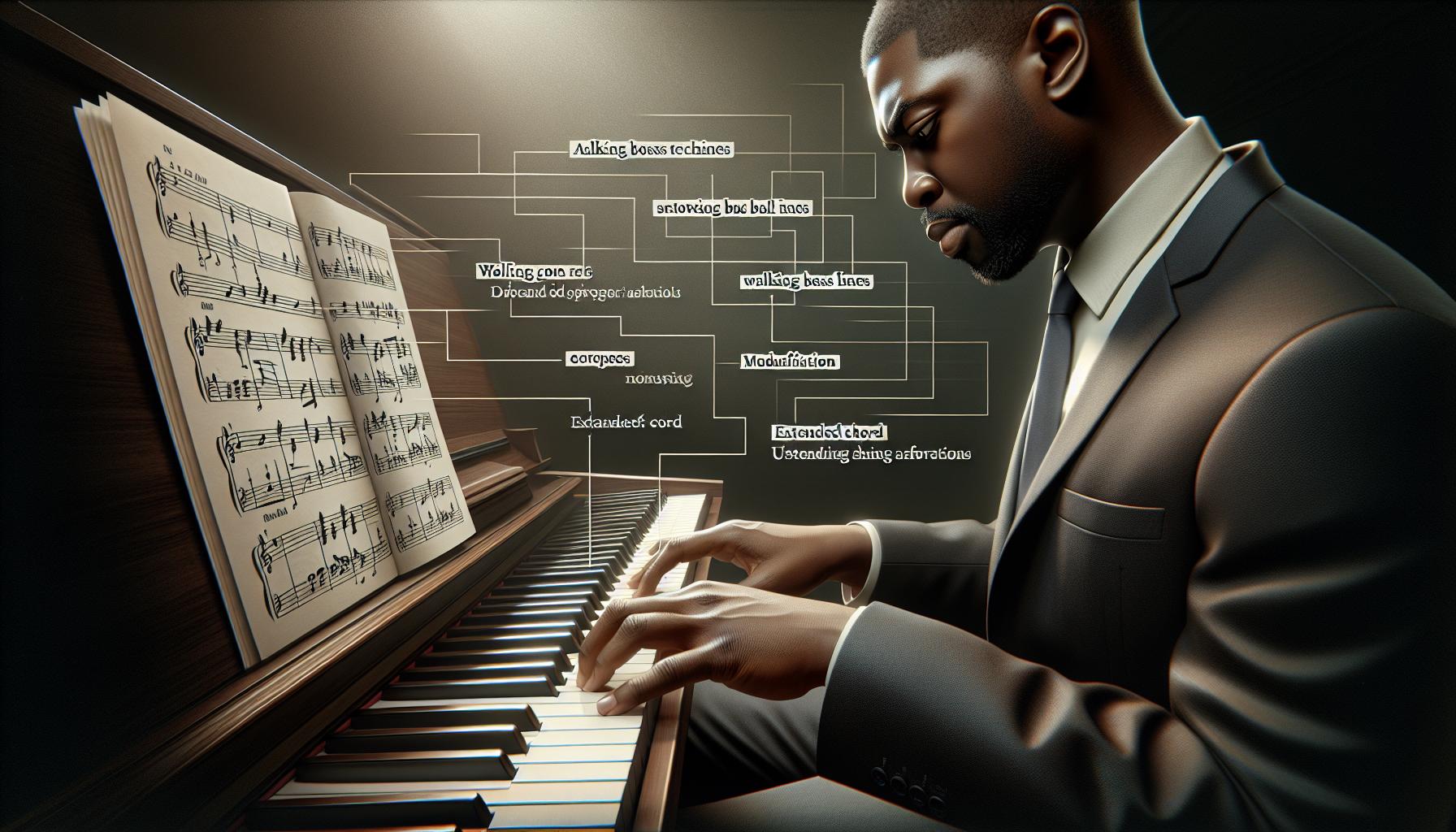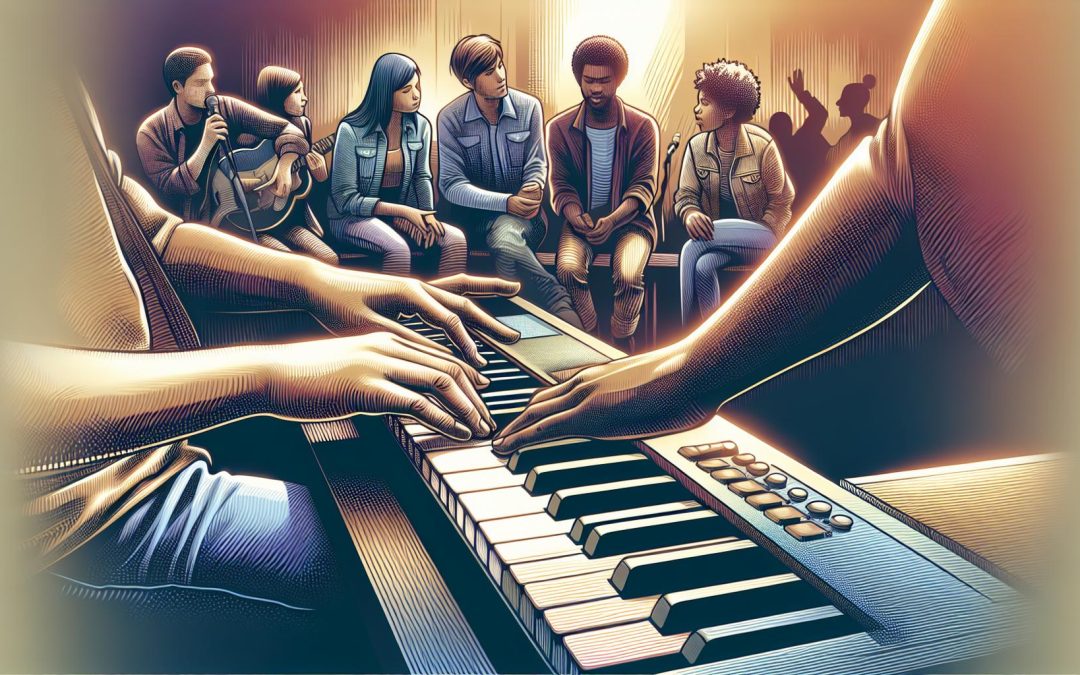Diving into the world of gospel music opens up a realm of soulful melodies and rich harmonies that can stir the deepest emotions. For those looking to master this genre on the keyboard, learning gospel chords is the first step toward capturing its essence. It's a journey that's as rewarding as it is challenging, filled with moments of both revelation and deep practice.
Gospel music, with its roots deeply embedded in the heart of spiritual and uplifting messages, demands a unique blend of musicality and emotion from its players. The keyboard, with its versatile range, becomes the perfect instrument to convey the power and depth of gospel music. As beginners start this journey, they'll find that gospel chords are more than just notes played together; they're expressions of faith, hope, and joy.
Understanding Gospel Music
Gospel music stands out as a genre deeply entrenched in emotion and spiritual messaging. It's a vibrant form of music that stems from the African American churches of the early 20th century, growing into a significant cultural and musical movement over the years. Gospel music is characterized by its powerful vocals, dynamic ranges, and, most importantly, the expressive keyboard chords that underpin its melodies.
One of the key aspects that set gospel music apart is its purpose. It's not just about entertainment; it's about conveying messages of hope, faith, and joy. Gospel musicians often see their craft as a form of ministry, reaching out and touching hearts through their performances. This spiritual connection is why learning to play gospel music, especially on the keyboard, requires more than just technical skill; it demands an understanding and appreciation of the genre's depth and heritage.
The keyboard, in gospel music, is more than an instrument; it's a vessel for storytelling. Each chord carries with it a piece of history, a breath of emotion, and a message of inspiration. For those learning gospel chords, it’s crucial to grasp the emotional weight they carry. Many gospel chords are extensions or variations of basic chords, adding layers of complexity and richness to the music. This complexity isn't there just for musicality's sake; it reflects the multifaceted nature of spiritual life and faith.
In learning gospel keyboard chords, players will encounter a variety of chord types, including:
- Major chords, representing joy and celebration
- Minor chords, conveying moments of reflection or solemnity
- Seventh chords, adding a sense of anticipation or longing
- Suspended chords, creating a feeling of suspense or unresolved tension
Each of these chords, when played in the context of a gospel song, contributes to the narrative and emotional journey of the piece.
Gospel music also places a strong emphasis on improvisation and personal expression. This means that while there are certainly foundational chords and techniques to master, there's also ample room for individual creativity. The ability to improvise comes with understanding the structure and flow of gospel music, allowing musicians to inject their own experiences and emotions into their performances.
Importance of Learning Gospel Keyboard Chords

Learning gospel keyboard chords isn't just about gaining another skill. It's about embracing a tradition that's deeply woven into the fabric of gospel music. Gospel chords serve as the backbone of the genre, providing depth and emotion to songs that speak to the soul. For musicians, understanding these chords is akin to learning a new language, one that communicates hope, faith, and joy through melody.
The role of the keyboard in gospel music cannot be understated. It's the instrument that often leads the congregation, guiding them through worship with every chord progression. The keyboard's versatility allows for the incorporation of various musical styles, from jazz-infused rhythms to classic hymns, all of which enrich the gospel music experience. By learning gospel keyboard chords, musicians can contribute to this rich tapestry, adding their voice to a chorus that spans generations.
Another key aspect of learning these chords is the opportunity for personal expression. Gospel music is deeply personal, reflecting the trials, triumphs, and spiritual journey of those who play and listen to it. By mastering gospel chords, musicians can tell their own stories through music, connecting with listeners on a profound level. This connection is what transforms a song from a sequence of notes into a moving experience.
Furthermore, the practice of learning gospel keyboard chords opens the door to improvisation. Gospel music thrives on spontaneity and emotional authenticity, qualities that are enhanced through improvised play. Knowing the foundational chords gives musicians the confidence to explore and experiment, making each performance unique. This improvisational skill is not only valuable for personal expression but also for accompanying vocalists and other musicians, allowing for a dynamic and interactive worship experience.
| Type of Chord | Significance in Gospel Music |
|---|---|
| Major | Conveys joy and celebration |
| Minor | Adds depth and emotion, often used in reflective or somber pieces |
| Seventh | Introduces tension and release, adding complexity to songs |
| Suspended | Creates anticipation, often resolving into a major or minor chord |
This table underscores the variety and complexity of chords used in gospel music, each carrying its own emotional weight and historical significance. Understanding these chords isn't just a technical skill; it's a way to participate in a broader cultural and spiritual dialogue.
Basic Gospel Keyboard Chords to Start With

When embarking on the journey of learning gospel keyboard chords, it's crucial to have a solid foundation. Beginning with the basics not only simplifies the learning curve but also establishes a strong musical base upon which more complex chords and techniques can be built. Naturally, there are several key chords that are essential for any aspiring gospel keyboardist to master early on.
Major Chords form the backbone of gospel music, instilling a sense of hope and joy in many songs. These chords are straightforward and consist of the root note, the major third, and the perfect fifth. For example, a C major chord is made up of C, E, and G. Major chords are pivotal in creating uplifting and powerful moments in gospel music.
Minor Chords add depth and emotional complexity to gospel songs, introducing a sense of somberness or introspection. They are similar to major chords but with a minor third instead of a major third. An A minor chord, for example, includes A, C, and E. These chords are crucial for expressing the full spectrum of spiritual and emotional experiences in gospel music.
Seventh Chords are often used in gospel music to add a layer of soul and bluesy feel. These chords include a seventh note in addition to the basic triad. The dominant seventh chord, for instance, is built by adding a minor seventh to a major triad. A G7 chord would consist of G, B, D, and F. Seventh chords are key in creating tension and release, a fundamental dynamic in gospel music.
Suspended Chords introduce a sense of anticipation or suspense in music. These are formed by replacing the third of a chord with either a second (sus2) or a fourth (sus4). For instance, a Csus4 chord is made of C, F, and G. Suspended chords offer a way to embellish songs and add variety to chord progressions.
To illustrate the significance and frequency of these chords in gospel music, a simple table showcases their usage in common gospel songs:
| Chord Type | Examples in Gospel Songs |
|---|---|
| Major Chords | "Oh Happy Day", "Amazing Grace" |
| Minor Chords | "His Eye Is on the Sparrow" |
| Seventh Chords | "How Great Thou Art" |
| Suspended Chords |
Advanced Techniques and Progressions

Once the foundational chords are mastered, gospel keyboardists can elevate their playing with Advanced Techniques and Progressions. Gospel music is rich with emotion and dynamics, often requiring more than just basic chords to fully convey its powerful messages. Incorporating advanced techniques into one's playing can truly bring a piece to life, making it resonate with both the player and the audience.
Walking Bass Lines
One popular technique in gospel music is the use of walking bass lines. These involve moving smoothly between chords by playing intermediate notes, creating a sense of motion and groove. It's a technique that demands both timing and creativity, turning a simple chord progression into something far more engaging.
- Start simple with major scales
- Practice moving between chord tones
Modulations and Key Changes
Modulations, or key changes, are commonly used to uplift the energy and intensity of a piece. They're a dramatic way to transition between sections of a song. When done smoothly, modulations can evoke a strong emotional response from the audience.
- Practice common gospel modulations like moving up a whole step
- Use pivot chords to transition seamlessly
Extended Chords and Alterations
To add depth and color to your music, learning extended chords and alterations is key. Extended chords include the 9th, 11th, and 13th, which can add a rich, complex sound to gospel music. Alterations such as sharp or flat 5ths and 9ths introduce tension and dissonance, adding to the emotional expressiveness of a piece.
- Experiment with different extensions on common chords
- Use alterations sparingly for maximum impact
Voice Leading Techniques
Voice leading is the smooth transition of individual note lines or voices from one chord to the next. In gospel music, good voice leading can make chord progressions more cohesive and emotionally compelling. Paying attention to how the notes of one chord move to the notes of the next can greatly enhance the overall sound.
- Keep common tones between chords when possible
- Move each voice to the nearest available note in the next chord
Mastering the Emotion and Soul of Gospel Music

In the journey of learning gospel keyboard chords, it's crucial for musicians not just to understand the technical aspects but also to grasp the emotional depth and soulful nuances that give gospel music its distinctive power. Gospel music, rich in its diversity, offers a profound canvas for keyboardists to express feelings ranging from fervent hope to deep sorrow, all within the context of uplifting spirituality.
Emotional Expression Through Chords and Progressions is central to capturing the essence of gospel music. Major chords, often seen as happy and uplifting, and minor chords, typically associated with sadness or introspection, are just the beginning. The use of seventh chords, diminished chords, and augmented chords adds layers of complexity and emotion, enabling keyboardists to convey a broader spectrum of feelings.
Adopting techniques like dynamics control—the variation of loudness—and artful use of silence can significantly impact the conveyance of emotion. A softly played section can draw listeners into a reflective state, whereas a sudden crescendo can symbolize an epiphany or a moment of divine revelation. These techniques, when mastered, allow the keyboardist to take the audience on an emotional journey, guiding them through the highs and lows synonymous with the human experience.
Connecting With the Audience is another pivotal aspect of playing gospel music on the keyboard. Gospel music isn't just performed; it's shared between the musician and the listeners. It's a conversation without words, where emotions are exchanged through melody and harmony. To effectively connect, keyboardists must not only focus on technical proficiency but also on empathy and understanding their audience. Observing and responding to the audience's reactions can help tailor a performance that resonates on a deeper level, creating a shared spiritual experience.
Incorporating Gospel Music Traditions such as call-and-response patterns can further bridge the gap between the keyboardist and the audience. These traditions, deeply rooted in African musical practices, encourage participation and create a sense of community. By integrating these elements, keyboardists can foster a more inclusive environment, inviting the audience to be an active part of the musical experience.
Conclusion
Mastering gospel keyboard chords is more than just hitting the right notes. It's about diving deep into the heart of gospel music and bringing out the rich tapestry of emotions that define this genre. With a focus on various chord types and the subtle art of dynamics and silence, keyboardists can truly connect with their audience on a profound level. Remember, it's not just about playing music; it's about sharing an experience that resonates with the soul. So, embrace these techniques, engage with gospel music traditions, and let every chord you play be a reflection of the deep emotional journey gospel music invites us all to embark on.
Harlan Kilstein began playing piano during covid with no piano background at all. He taught himself how to play learning what to do and what not to do.
Today he's an advanced intermediate player and can help you grow in your skills because he learned all this on his own.







